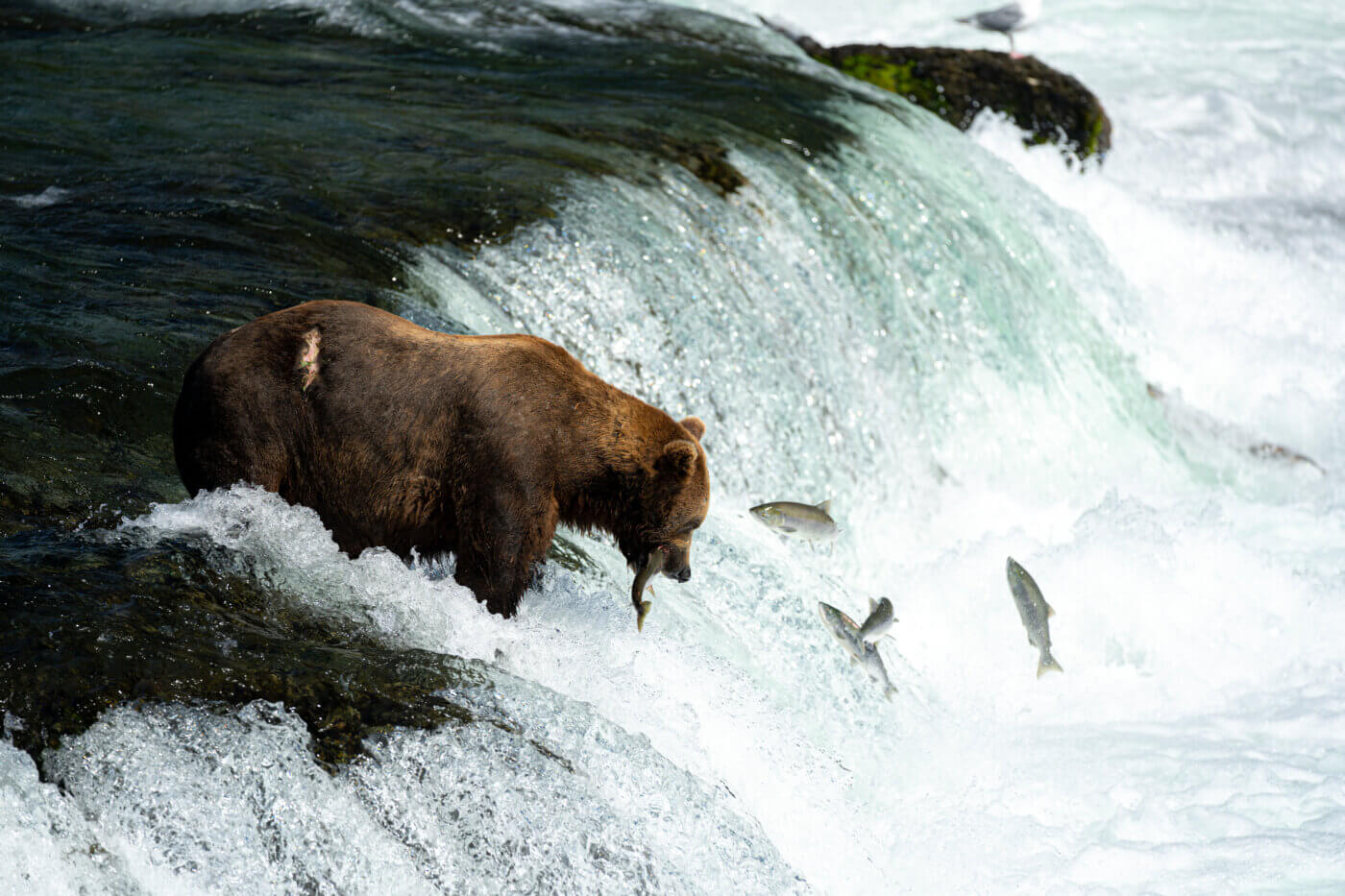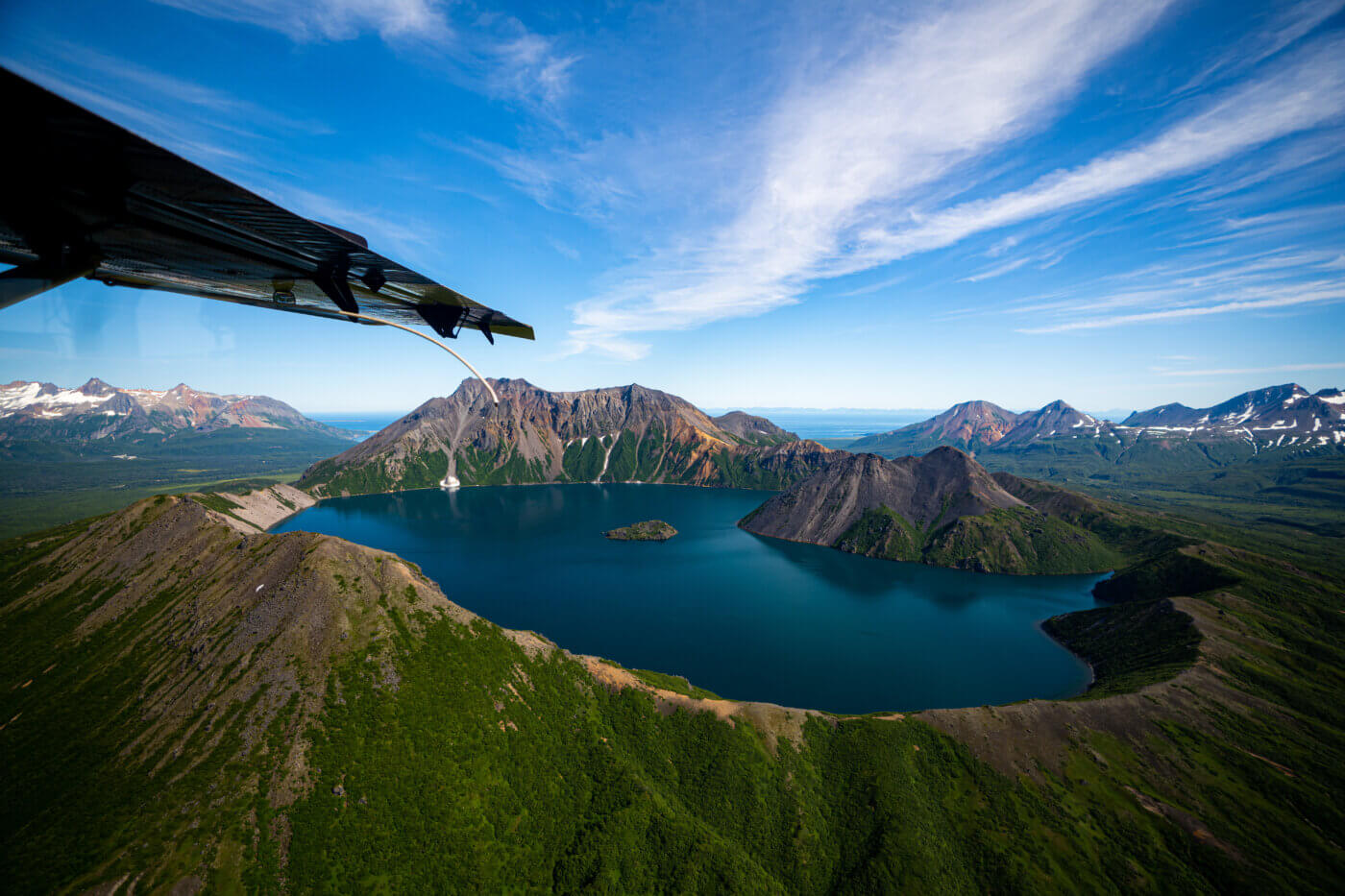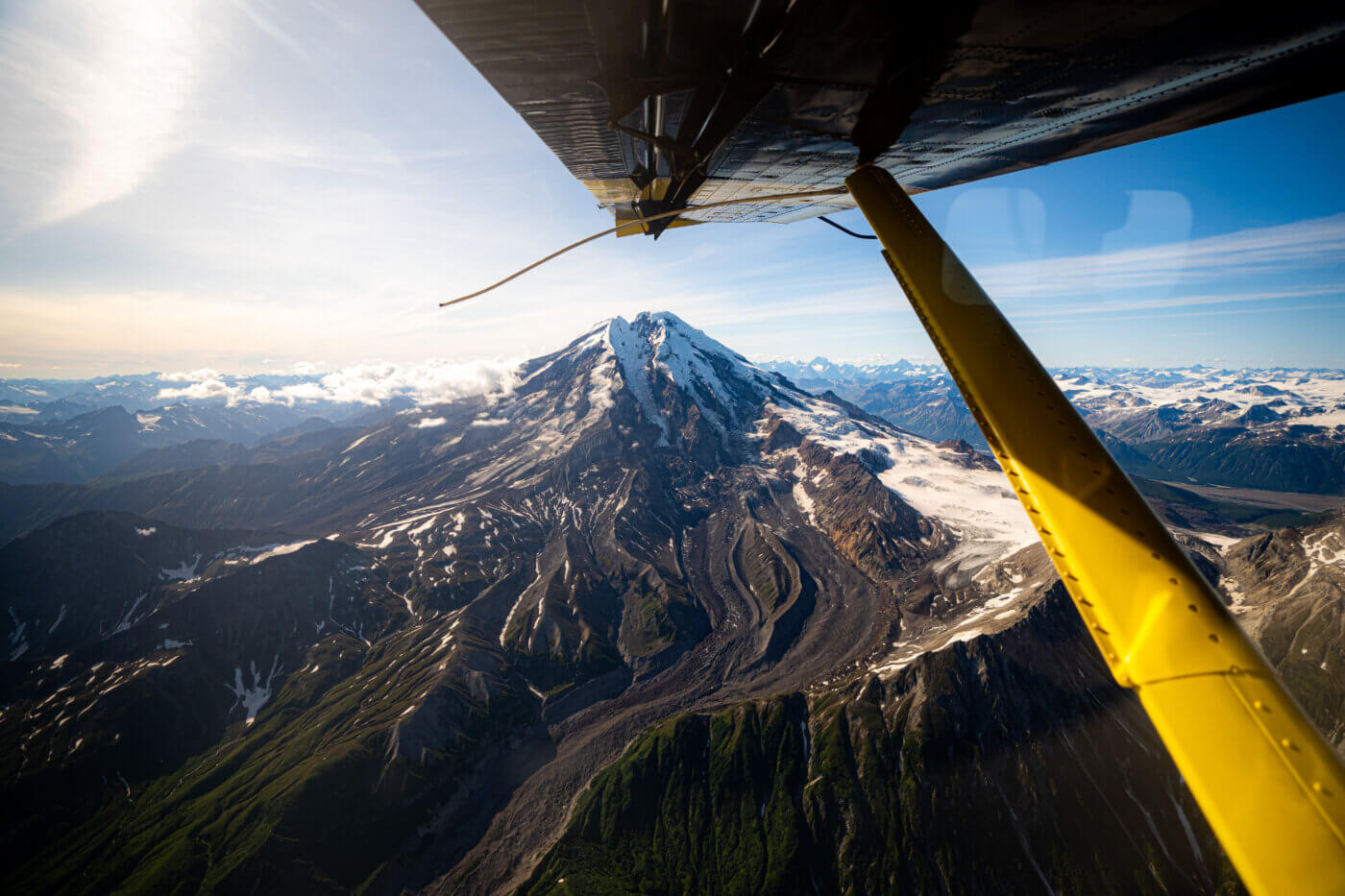By Sarah Sekula
It was day one of a weeklong trip to Katmai National Park & Preserve when it happened: A mama bear and her three little ones popped up on the trail right next to 12-year-old Brandon Cole and his dad, Brent.
“The bears were only a few feet off the trail sleeping when they woke up and startled us,” Cole says. “As I started to freak out, they slowly got up and walked down the trail in the direction we were headed before disappearing into the woods.”
That special moment led to a lifelong fascination with brown bears. Lucky for Cole, he grew up, and still lives in, Alaska, home to about 30,000 bears; Katmai is home to about 2,200. In fact, bears outnumber residents on the Alaska Peninsula.
On this particular trip, to maximize the bear time, they spent two nights at Brooks Camp, a lodge and campground (open June to early September; reservations required) inside the park known for its prime bear-viewing opportunities.

That afternoon, he and his dad watched 20 or 30 bears snack on salmon for hours. “We were one of a few people on the viewing deck for the afternoon watching the bears fish for salmon,” he recalls. “It’s one of the best memories I have.”
Fast forward 15 years, and Cole is now a guide at Tordrillo Mountain Lodge, a 40-minute flight from Anchorage, where he photographs bears on the daily and joins guests on sky-trekking tours over Katmai in a Turbine Otter float plane. He says this lesser known park is getting more attention these days and so are its furry residents.
“A lot of guests are interested in seeing bears during their trip up to Alaska,” he says. “Katmai National Park, and the coast of Lake Clark, is some of the most beautiful country you’ll ever see. We fly along a chain of volcanoes and where the mountains meet the glacier-tinted ocean. It’s extremely volcanic so tons of beautiful colors. Then you get an idea of how vast Alaska is.”

Back at Tordrillo, guests can relax in the hot tub until dinner is ready. Afterward they get to check out all the wildlife photos from the day.
The increased interest in Katmai bears could be thanks to Fat Bear Week, which started when the park installed bear cams and encouraged viewers to vote on their favorite hefty bear. Held over the course of seven days and concluding on Fat Bear Tuesday, people vote in a March-Madness-style bracket. It’s now an internet sensation that catapulted the bears to celebrity status.
“I think people really enjoy following an evolving cast of characters year in and year out where we have returning bears who are well known pitted against the up and comers,” says Katmai superintendent Mark Sturm.
His favorite is 480 Otis the 2021 Fat Bear Week champ. “He may be past his prime and who knows how much longer we’ll have him with us, but he is a survivor, and as I continue to get older myself I have come to appreciate Otis’ adaptability,” he says.
Beyond the bear necessities
If you visit Katmai without exploring the Valley of Ten Thousand Smokes, you are missing out. Here, you can see Mount Novarupta, the largest volcanic explosion or implosion in recent history. When the mountain imploded in 1912, it filled the vast expanse with thousands of feet of ash, drying up nearby rivers and forcing the evacuation of the village. Over the years, the rivers have carved canyons through the ash, and the cauldron still smokes as you walk across the valley.

“Closest you’ll get to Mars, probably,” Cole says. “We have landed twice up in the valley with my dad’s plane, and the moment you step out you feel you are on a different planet. You mix the ash around and the earth turns red, yellow and purple. We then would fly back through the heart of the park, past crater lakes and hanging glaciers, a truly incredible place.”
Best time for bear viewing
Bears venture out of their dens in April or May after spending the long Alaskan winters in hibernation. “It is always best to give them their space as they have been sleeping for months and can be hungry and cranky coming out of their den,” says Cole.
Come July and August, salmon are migrating upstream to their spawning grounds. So during those months, “if you find a salmon spawning ground, you’ll probably find a bear,” he says. “June can be a good month to find bears around the coasts of Alaska and especially Katmai or Lake Clark National Park as they are digging for clams along the beaches or eating the vegetation,” he says. “September can be a great month as well as salmon are still spawning, especially the salmon who have a longer migration from the coast and bears are looking for fill up to the very end before starting to hibernate by the end of October/November.”
How to behave around bears
There are several things to know before visiting Katmai’s wilderness. Rule one: Carry bear spray and know how to use it. Rule two: Read the bear-safety rules at nps.gov; if you are staying at Brooks Camp, you will attend a bear-safety briefing.
“The most important lesson being to never run from a bear if you see one because it triggers their natural predator-prey response to chase you just as a dog chases a squirrel or a ball,” Cole says. “Always make sure to be loud and talk to the bears as you are out hiking in the backcountry because sneaking up on a bear can trigger an attack, as well. Then if you do confront a bear, read the situation, most of the time you want to act tall and if you are with a group of people then stay as a unit and make a lot of noise.”
If you can’t make the trip out to Katmai, plan a bear-inspired trip to these parks.
Grand Teton National Park, Wyoming
Grizzly bears and black bears, spring and fall
“Visitors come from around the world to see bears here,” says Justin Schwabedissen, bear biologist at Grand Teton National Park. “Expect large crowds of wildlife watchers at resulting ‘bear jams’ where traffic backs up due to visitors wanting to see the bear.”
Yellowstone National Park, Wyoming, Montana and Idaho
Grizzly bears and black bears, spring and summer
Glacier National Park, Montana
Black bears and grizzly bears, May through July
Rocky Mountain National Park, Colorado
Black bears, spring and summer
Great Smoky Mountains, Tennessee
Black bears, spring and summer
